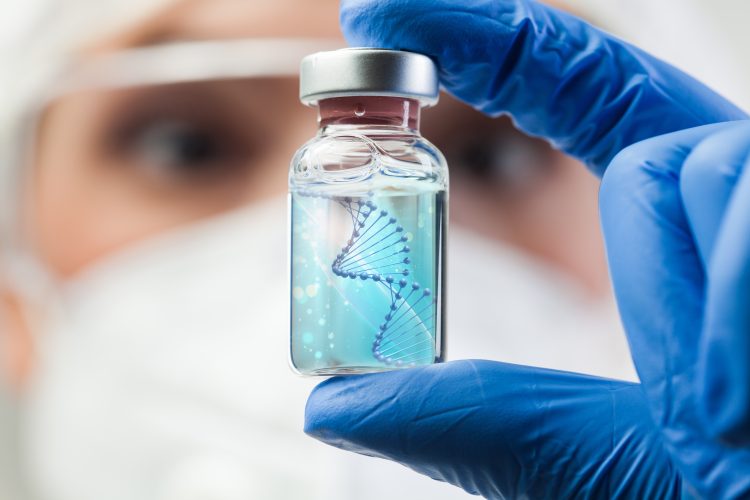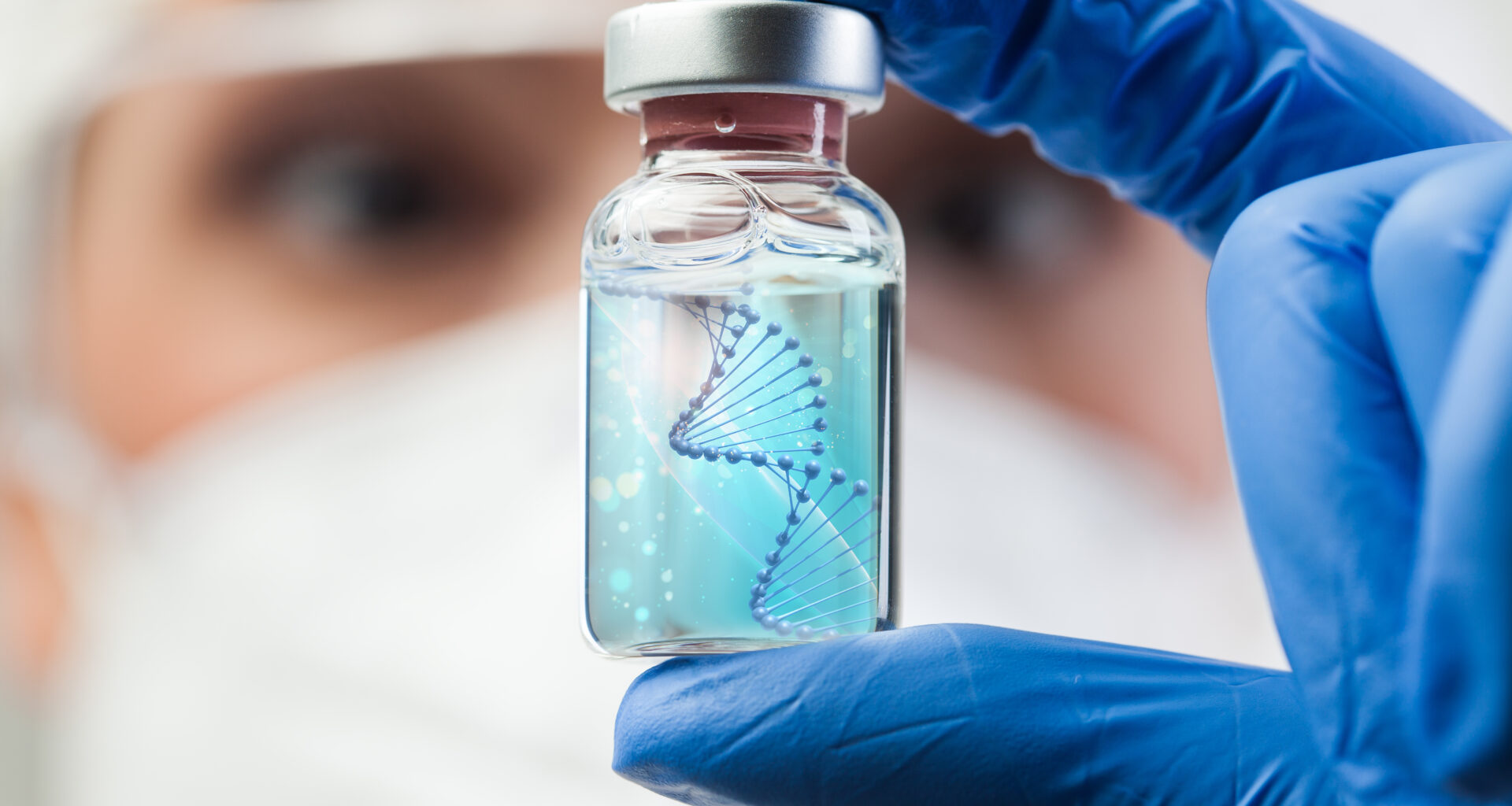Most gene therapies rely on static DNA promoters to control gene activity, but nature uses far more sophisticated tools. Dr Matthew Dale explores how harnessing RNA-level control could enable treatments that sense and respond in real time, offering unprecedented precision and safety.

In the fast-changing world of healthcare, gene and cell therapies are an exciting and growing area. A huge amount of progress has been made in recent years, giving hope to patients with diseases previously thought untreatable or incurable. However, at the heart of these therapies lies the challenge of delivering them safely and effectively.
One of the biggest challenges is controlling gene expression, ensuring that therapeutic genes are activated at the right time and at the right level. Advances in delivery technologies such as viral vectors have improved outcomes, but when looking at how genetic systems function in nature it becomes clear that they are regulated in many complex and sophisticated ways – far beyond what is currently utilised by gene therapies. The field has typically relied on promoters as the main tool for controlling gene expression, but this represents only a fraction of the regulatory strategies employed by natural systems.
RNA as a natural regulator
For example, in nature, RNA plays a vital role in gene regulation. Mechanisms involving RNA splicing, degradation, folding and interaction with small molecules or proteins allow gene expression to be modulated in response to the needs of the cell. These natural RNA-level controls offer flexibility and precision, but until recently they have been largely overlooked in gene therapy, in large part because of the difficulty of adapting them for therapeutic use.
My background is in synthetic biology, a field that treats biology not just as something to be studied but as something to be built.
My background is in synthetic biology, a field that treats biology not just as something to be studied but as something to be built. It views biological systems as toolkits of modular parts that can be recombined and engineered in various ways for specific outcomes. Rather than relying solely on natural systems, synthetic biology applies engineering principles such as modularity, abstraction and standardisation to construct new biological functions from the ground up. This mindset differs significantly from the traditional discovery-driven approaches used in biology and is central to Concinnity’s approach to RNA-based gene regulation. By applying these principles, my co-founder Jessica Birt and I developed a platform technology that allows us to efficiently build RNA control systems with user-defined behaviours.
It was through talking to our collaborators and colleagues that we realised how this technology could be used to tackle some of the biggest challenges in the gene therapy space.
Our main goal is to use our platform in therapies that improve patients’ lives. Part of that is being at the forefront of conversations about safety and asking the question: why can’t we apply engineering principles to biology?
Gene therapy: back to basics
To take it back to basics, gene therapy delivers genetic material, usually DNA, that carries instructions to alter the expression of specific genes in order to correct or modulate underlying disease processes. This genetic material is typically introduced into target cells using viral vectors, which serve to transport the therapeutic sequence into the cell. Once inside, the vector’s cargo is processed by the host cellular machinery.
Central to this process is the expression cassette, a modular construct within the delivered genetic payload. The cassette typically includes a promoter to initiate transcription, the therapeutic coding sequence, and often regulatory elements such as enhancers, polyadenylation signals and untranslated regions (UTRs) that influence the stability and efficiency of gene expression.
Control sequences in the 3′ UTR
For our control systems we place a synthetic control sequence in the 3′ UTR of the gene therapy cassette that only becomes active once it is transcribed into mRNA. The UTRs are ideal places for a control sequence, as they are amenable to being modified while minimising any unintended effects on the expression cassette.
The control system can then be regulated by small molecules. These small molecules can be natural to the body’s biology or a synthetic molecule such as a drug. When a specific small molecule binds to the control system, it makes structural changes to the mRNA, resulting in either a decrease or increase in therapeutic protein production. This allows gene expression to be modulated to the desired levels to improve efficacy and reduce side effects of the gene therapy.
RNA controls offer a number of advantages: they can be engineered to respond to a diverse range of small molecules; they are small in size, allowing them to fit into space-constrained delivery vectors; and they are agnostic to the delivery method, making them compatible with many viral vectors and other delivery platforms.
At the moment, most of the tools that exist are DNA-level controls such as synthetic promoters, however, these have their own limitations. RNA controls offer a number of advantages: they can be engineered to respond to a diverse range of small molecules; they are small in size, allowing them to fit into space-constrained delivery vectors; and they are agnostic to the delivery method, making them compatible with many viral vectors and other delivery platforms. Their modularity means they can be used with many different therapeutic transgenes, and they can be paired with a synthetic promoter, making them fully compatible with a company’s preferred promoter and enabling enhanced control when used with a regulatable promoter. Furthermore, our RNA controls are self-contained: they do not require additional genetic components to be delivered to the patient and rely only on the core host cell machinery. This helps maximise consistency in performance across different tissues and species.
Instead of looking at existing natural systems and editing them to suit our purpose, we can instead ask the question: ‘If your therapy could respond to any small molecule, what would it be?’ We were surprised by how often gene therapy companies did not have an immediate answer. Until now, the technology has not existed to allow these conversations to happen in the industry. But this technology has tremendous potential, as there are huge numbers of small molecule metabolites linked to disease states that could be used to control a therapy, from metabolic diseases and cancers to memory-related illnesses.
These control systems create the possibility to build gene therapies that can be controlled in the clinic. They can respond to external signals such as the presence of an FDA-approved small molecule, giving clinicians real-time control to dial therapies up or down as needed. If an adverse response occurs, the therapy can be swiftly modulated to stay within a safe and effective range, adding a vital layer of safety that today’s gene therapies simply do not offer.
What makes this even more exciting is that, beyond external cues, there is the possibility of enabling gene therapies that can respond dynamically and in real time to internal disease signals.
What makes this even more exciting is that, beyond external cues, there is the possibility of enabling gene therapies that can respond dynamically and in real time to internal disease signals. Imagine treatments that adjust themselves based on the biological impact they are having and fine-tune their activity to match the evolving state of the disease. Many of the most challenging conditions to treat today require incredibly precise control of gene expression. A therapy that is too weak is ineffective; too strong, and it becomes unsafe. This approach enables that precision by reducing the risks of overexpression while maintaining therapeutic impact.
Expanding the reach of gene therapy
This technology could help define the new generation of gene therapy, moving past static, one-time treatments to dynamic systems that adapt, evolve and remain responsive long after delivery. This unlocks the potential to treat broader and more complex diseases safely. Today’s gene therapies come with a trade-off: the diseases they target are often so severe that patients and clinicians are only willing to accept the risks associated with a new, experimental treatment because the alternative is worse. But with dynamic control systems built in, it is possible to begin to close that gap. By actively managing therapeutic activity in real time, those risks can be reduced and the reach of gene therapy expanded to broader, more common conditions without compromising safety.
About the author
Dr Matthew Dale holds a PhD in Synthetic Biology from the University of Edinburgh, where he was part of the Rosser Lab. He is the Co-founder of Concinnity Genetics, a spinout from the University of Edinburgh, and leads the experimental development of a cutting-edge platform technology that generates RNA-based gene control systems for the gene and cell therapy sectors. Concinnity’s platform has the potential to be a game-changer in the field, transforming how genetic diseases are treated.
Related topics
Bioengineering, Cancer research, Cell Therapy, DNA, Drug Delivery, Gene Therapy, Genome Editing, Genomics, Personalised Medicine, RNAs, Small Molecules, Synthetic Biology

